Related Research Articles
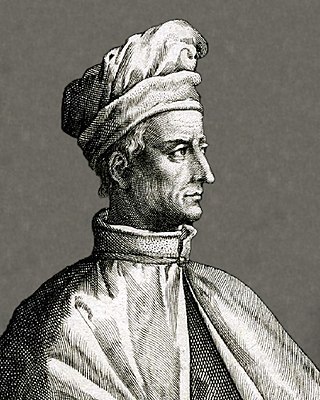
Amerigo Vespucci was an Italian explorer and navigator from the Republic of Florence for whom "America" is named.

Martin Waldseemüller was a German cartographer and humanist scholar. Sometimes known by the Hellenized form of his name, Hylacomylus, his work was influential among contemporary cartographers. His collaborator Matthias Ringmann and he are credited with the first recorded usage of the word America to name a portion of the New World in honour of Italian explorer Amerigo Vespucci in a world map they delineated in 1507. Waldseemüller was also the first to map South America as a continent separate from Asia, the first to produce a printed globe, and the first to create a printed wall map of Europe. A set of his maps printed as an appendix to the 1513 edition of Ptolemy's Geography is considered to be the first example of a modern atlas.
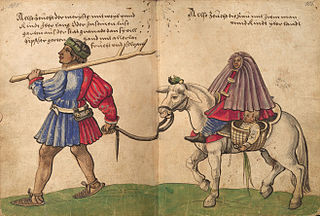
Year 1501 (MDI) was a common year starting on Friday in the Julian calendar.
Portuguese colonization of the Americas constituted territories in the Americas belonging to the Kingdom of Portugal. Portugal was the leading country in the European exploration of the world in the 15th century. The Treaty of Tordesillas in 1494 divided the Earth outside Europe into Castilian and Portuguese global territorial hemispheres for exclusive conquest and colonization. Portugal colonized parts of South America, but also made some unsuccessful attempts to colonize North America.

The naming of the Americas, or America, occurred shortly after Christopher Columbus's death in 1506. The earliest known use of the name America dates to April 25, 1507, when it was applied to what is now known as South America. It is generally accepted that the name derives from Amerigo Vespucci, the Italian explorer, who explored the new continents in the following years on behalf of Spain and Portugal, with the name given by German cartographer Martin Waldseemüller. However, some have suggested other explanations, including being named after the Amerrisque mountain range in Nicaragua, or after Richard Amerike, a merchant from Bristol, England.
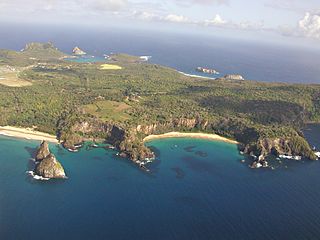
Fernando de Noronha, officially the State District of Fernando de Noronha and formerly known as the Territory of Fernando de Noronha until 1988, is an archipelago in the Atlantic Ocean, part of the State of Pernambuco, Brazil, and located 354 km off the Brazilian coast. It consists of 21 islands and islets, extending over an area of 26 km2 (10 sq mi). Only the eponymous main island is inhabited; it has an area of 18.4 km2 (7.1 sq mi) and a population estimated at 3,101 in 2020. While most of the archipelago is relatively low-lying, there are parts reaching more than 100 m (328 ft) in elevation.

The Age of Discovery, also known as the Age of Exploration, was part of the early modern period and largely overlapped with the Age of Sail. It was a period from approximately the late 15th century to the 17th century, during which seafarers from a number of European countries explored, colonized, and conquered regions across the globe. The Age of Discovery was a transformative period in world history when previously isolated parts of the world became connected to form the world-system and laid the groundwork for globalization. The extensive overseas exploration, particularly the opening of maritime routes to the Indies and the European colonization of the Americas by the Spanish and Portuguese, later joined by the English, French and Dutch, spurred in the international global trade. The interconnected global economy of the 21st century has its origins in the expansion of trade networks during this era.

The Bay of All Saints, also known as All Saints' Bay and Todos os Santos Bay, is the principal bay of the Brazilian state of Bahia, to which it gave its name. It sits on the eastern coast of Brazil, surrounding part of Bahia's capital Salvador and opening to the Atlantic Ocean. It covers 1,223 square kilometers (472 sq mi), making it the largest bay in Brazil.

The Cantino planisphere or Cantino world map is a manuscript Portuguese world map preserved at the Biblioteca Estense in Modena, Italy. It is named after Alberto Cantino, an agent for the Duke of Ferrara, who successfully smuggled it from Portugal to Italy in 1502. It measures 220 x 105 cm.

Matthias Ringmann (1482–1511), also known as Philesius Vogesigena, was an Alsatian German humanist scholar and cosmographer. Along with cartographer Martin Waldseemüller, he is credited with the first documented usage of the word America, on the 1507 map Universalis Cosmographia in honour of the Italian explorer Amerigo Vespucci.
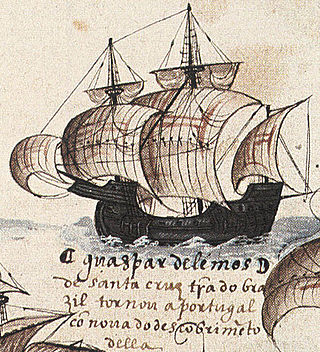
Gaspar de Lemos was a Portuguese explorer and captain of the supply ship of Pedro Álvares Cabral's fleet that arrived to Brazil. Gaspar de Lemos was sent back to Portugal with news of their discovery and was credited by the Viscount of Santarém as having discovered the Fernando de Noronha archipelago in the Atlantic Ocean.
Fernão de Loronha, whose name is often corrupted to Fernando de Noronha or Fernando della Rogna, was a prominent 16th-century Portuguese merchant of Lisbon, of Jewish descent. He was the first charter-holder (1502–1512), the first donatary captain in Brazil and sponsor of numerous early Portuguese overseas expeditions. The islands of Fernando de Noronha off the coast of Brazil, discovered by one of his expeditions and granted to Loronha and his heirs as a fief in 1504, are named after him.
This is a historical timeline of Portugal's Second Dynasty.

The term "New World" is used to describe the majority of lands of Earth's Western Hemisphere, particularly the Americas. The term arose in the early 16th century during Europe's Age of Discovery, after Italian explorer Amerigo Vespucci published the Latin-language pamphlet Mundus Novus, presenting his conclusion that these lands constitute a new continent.
The year 1500 AD in science and technology included many events, some of which are listed here.
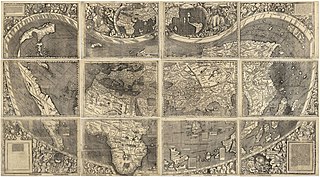
The Waldseemüller map or Universalis Cosmographia is a printed wall map of the world by German cartographer Martin Waldseemüller, originally published in April 1507. It is known as the first map to use the name "America". The name America is placed on South America on the main map. As explained in Cosmographiae Introductio, the name was bestowed in honor of the Italian Amerigo Vespucci.

The Second Portuguese India Armada was assembled in 1500 on the order of King Manuel I of Portugal and placed under the command of Pedro Álvares Cabral. Cabral's armada famously discovered Brazil for the Portuguese crown along the way. By and large, the Second Armada's diplomatic mission to India failed, and provoked the opening of hostilities between the Kingdom of Portugal and the feudal city-state of Calicut. Nonetheless, it managed to establish a factory in the nearby Kingdom of Cochin, the first Portuguese factory in Asia.
The year 1502 in science and technology included many events, some of which are listed below.
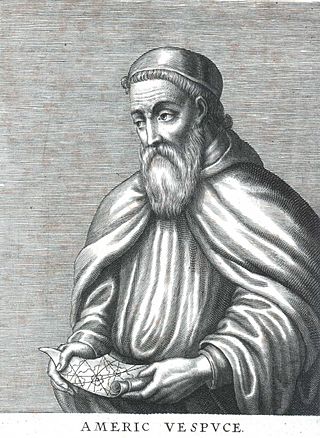
Amerigo Vespucci's Letter from Seville, written to his patron Lorenzo di Pierfrancesco de' Medici, describes experiences on Alonso de Ojeda's May 1499 voyage. Vespucci's findings during the Age of Discovery led Spain people to believe that North and South America were not connected to Asia, which was a common belief at the time and was even held by Vespucci himself. Despite the surrounding controversy among many historians about which Vespucci letters were real, and which ones were forged, this particular letter of Vespucci's is notable for its detailed description of the Brazilian coast and its inhabitants.
The Pilot Major or Pilot-Major of Spain was an important official of the Casa de Contratación, a crown agency of the Spanish Empire, with specific responsibilities in mapmaking and the licensing of nautical pilots.
References
- ↑ Albuquerque, Afonso de (2001). The commentaries of the great Afonso Dalboquerque, second viceroy of India , Adamant Media Corporation, p.xx. Issue 55. ISBN 1-4021-9511-7.
- ↑ "Américo Vespúcio" (in Portuguese). UOL Educaçao. 2014. Archived from the original on 16 July 2014. Retrieved 15 December 2014.
- 1 2 Grun, Bernard (1991). The Timetables of History (3rd ed.). New York: Simon & Schuster. p. 223.
- ↑ Garrison, Hudson Fielding (1921). An Introduction to the History of Medicine. Saunders. p. 239.